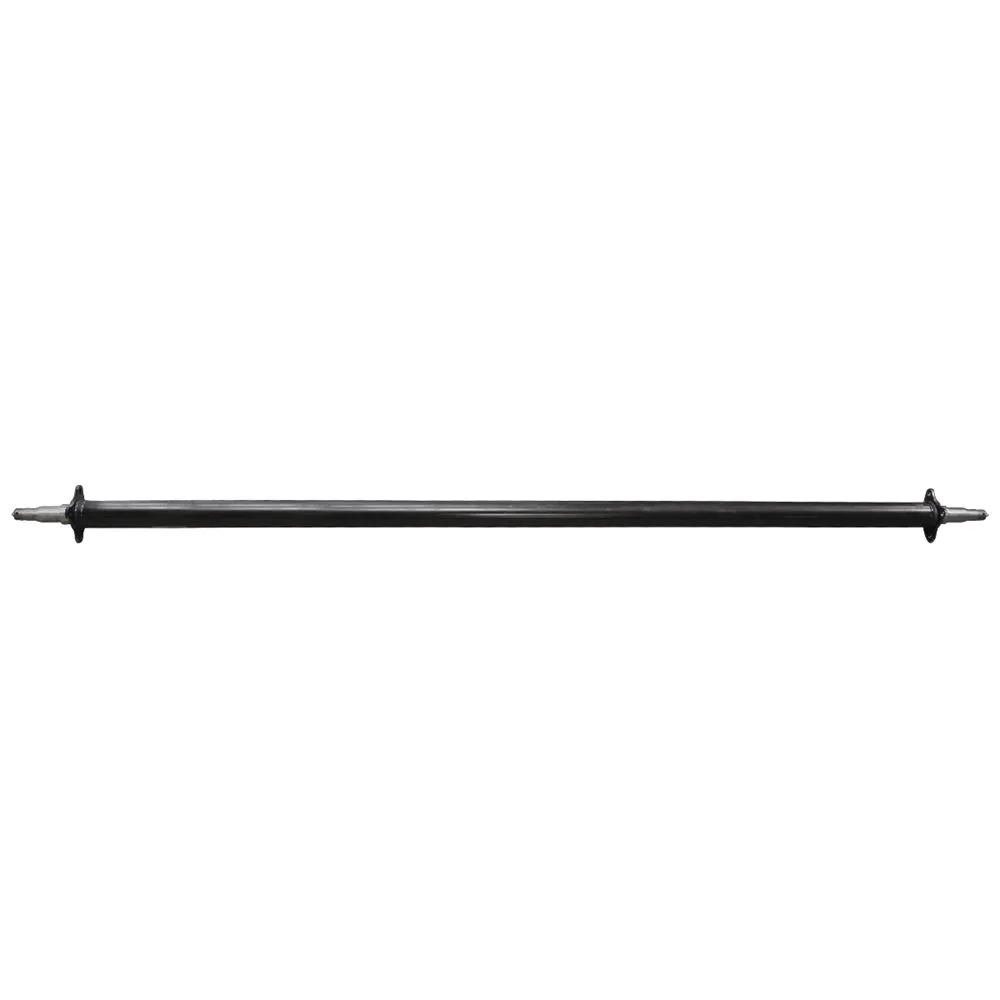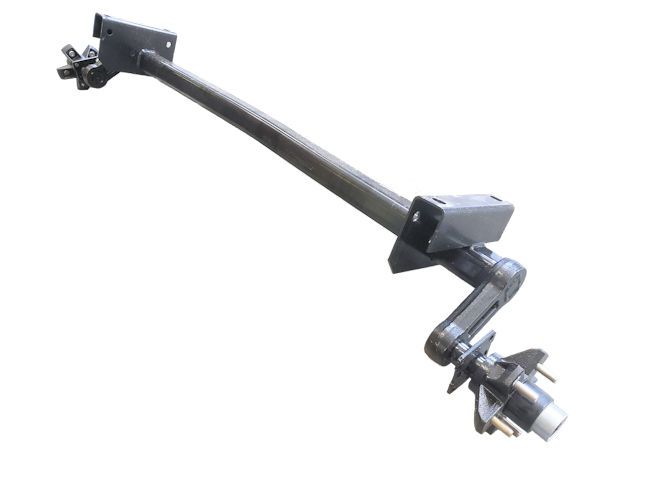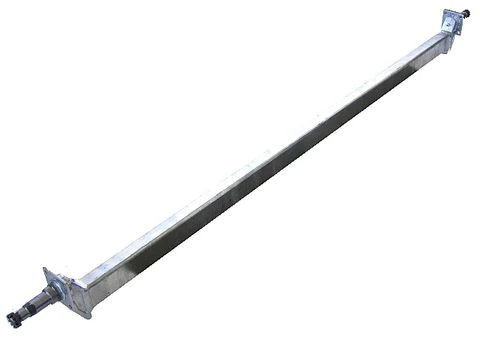Product Description
Hot Selling V shape Tri Axle 40cbm Powder Tanker Trailer Discharge/Unloading Heavy Duty Bulk Cement Trailer
Product Description
| Overall information | Tare weight | 12000kg |
| Effective Volume | 40 m3 | |
| Loading capacity | ton for bulk cement | |
| Dimension | 11900*2500*3900mm | |
| Compartment | Single compartment | |
| Tanker body | Material of Tank body | Q235A/4mm steel |
| Material of End plate | Q235A/6mm | |
| Manhole cover | 500mm manhole cover 3 sets | |
| Discharge valve | 4 inches disc valve | |
| Discharge pipe |
4 inches seamless steel tube | |
| Chassis | Axle |
Fuwa axle13ton type, 3 units |
| Suspension |
Common leaf spring suspension | |
| Tire |
12R22.5 12units | |
| Kingpin |
2 inches or 3.5 inches for option | |
| Landing gear |
28ton type |
|
| Braking system |
6 big chamber |
Product Details
Workshop
Packaging & Shipping
Customers’ Compliments
FAQ
Q1. Why choose us? What difference from other suppliers?
ZheJiang Jiyake Automobile Sales Co., Ltd. is a vehicle manufacturer, which integrates production, scientific research and sales.
- Save your budget — Manufacturer direct sale, no middleman.
- Quick Response — Working all the time, all kinds of social media, you could contact us directly. Most problems can be solved within 12 hours.
- Delivery guarantee — 25-40 days after receiving the deposit.
- Production tracking — We will actively inform you of the production progress every week to ensure that you are aware of the production situation.
- Inspection — A inspection report to you before delivery.
- After-sales service — After-sale guarantee service, secure your order.
Q2. Which markets do your vehicle export to?
We exported the flatbed trailers, sidewall trailers, Fence trailer, dump trucks, tipper trailers,Low bed trailer to all over the world, especially for the Africa Market and Mid east markets, the clients come from Djibouti, Ghana, Mozambique, Mauritania, Saudi Arabia, Tanzania, Benin, Indonesia, Thailand and so on.
Q3. What can you buy from us?
Semi Trailer,Flatbed Semi Trailer,Lowbed Semi Trailer,Dump Trailer,Tank Truck.
Q4. What information should I let you know if I want to get a quotation?
Please let us know the your purpose,road condition,cargo type,tons of your cargo,dimensions of trailer,quantity etc. The more info you provide, the more accurate model and price you will get.
Q5. Is it available to print our own brand on the vehicle?
Totally acceptable as you wish.
Contact way
Name: Jane
| Type: | Semi-Trailer |
|---|---|
| Load Capacity: | 50T |
| Certification: | ECE, GCC, CE, ISO9001, DOT, CCC, ISO/TS16949 |
| Wheel Base: | 8000-9000mm |
| Tread: | 1310 |
| Grade: | Medium Duty |

How do trailer axles contribute to a trailer’s maneuverability and control?
Trailer axles play a crucial role in a trailer’s maneuverability and control. Here’s how they contribute:
- Weight Distribution: The placement of trailer axles and the distribution of weight on them impact how a trailer handles. Proper weight distribution ensures stability and control during towing.
- Balance: Balanced axles help prevent issues like swaying or fishtailing. The even distribution of weight across the axles promotes smoother and more controlled towing.
- Number of Axles: Trailers with multiple axles generally have better weight distribution and stability. Tandem or multi-axle configurations help distribute the load evenly and enhance control.
- Steering Geometry: Axle placement influences a trailer’s turning radius and maneuverability. Axles placed closer to the front or back can affect how sharply a trailer can turn.
- Suspension Type: The type of suspension, whether leaf spring, torsion, or air suspension, can impact how well a trailer handles bumps and road imperfections, contributing to control and a smoother ride.
- Braking Systems: Axles equipped with brakes provide additional control by assisting in slowing down or stopping the trailer. Electric, hydraulic, or surge brakes are common options.
- Shock Absorption: Some axles come with shock absorbers to dampen vibrations and jolts, improving control by reducing the impact of road irregularities.
- Tire Size and Quality: Properly sized and high-quality tires on trailer axles ensure good traction and control. Trailer tires with a higher load capacity can handle the weight more effectively.
- Alignment and Maintenance: Regular maintenance, including keeping axles properly aligned and well-lubricated, is crucial for ensuring that the trailer’s axles operate optimally and contribute to control and stability.
In summary, the design, configuration, and maintenance of trailer axles significantly affect a trailer’s maneuverability and control. Properly chosen and maintained axles contribute to safe and predictable towing experiences.

What is the impact of trailer axle alignment on tire wear and performance?
Proper trailer axle alignment is crucial for tire wear and overall performance. Misaligned axles can lead to a range of issues:
1. Uneven Tire Wear:
– Axle misalignment can cause tires to wear unevenly. For example, excessive toe-in or toe-out (the angle of the tires relative to the trailer’s centerline) can lead to premature wear on the inner or outer edges of the tires. This not only reduces tire lifespan but also affects handling and safety.
2. Reduced Fuel Efficiency:
– Misaligned axles increase rolling resistance, which requires more energy to move the trailer. As a result, fuel efficiency can decrease, leading to higher operating costs.
3. Handling and Stability Issues:
– Axle misalignment can result in poor handling and reduced stability. Trailers may become more difficult to control, especially during braking and cornering, posing safety risks.
4. Overloading and Weight Distribution Problems:
– Misalignment can affect weight distribution. It may cause excessive weight on one axle, leading to overloading and potential legal issues. Balanced weight distribution is vital for safe and legal towing.
5. Axle Stress and Damage:
– Misalignment places additional stress on axles and suspension components. Over time, this stress can lead to component damage, potentially causing breakdowns and expensive repairs.
6. Trailer Drift:
– Misalignment can cause the trailer to drift or pull to one side, making it challenging to maintain a straight course, especially when driving at highway speeds.
7. Reduced Tire Lifespan:
– The combination of uneven tire wear, increased rolling resistance, and handling issues can significantly reduce the lifespan of trailer tires. This results in more frequent and costly tire replacements.
8. Safety Concerns:
– A misaligned trailer is less stable and more difficult to control, increasing the risk of accidents and compromising safety.
Alignment Solutions:
– To address axle misalignment, it’s essential to have the trailer inspected by a qualified technician. They can adjust the alignment by modifying the axle’s position and orientation. Precision alignment equipment is often used to ensure accuracy.
– Regular alignment checks and adjustments, as part of routine maintenance, can help prevent these issues and promote even tire wear and better performance.
– Properly aligned axles improve handling, safety, and tire longevity, making it a critical aspect of trailer maintenance.

Are there different weight capacities for trailer axles depending on the trailer type?
Yes, trailer axles come in various weight capacities, and the capacity depends on the specific trailer type and its intended use. Here are some common weight capacities for different trailer types:
1. Utility Trailers:
– Utility trailers often have single axles with weight capacities ranging from 1,000 to 3,500 pounds. These trailers are used for light-duty hauling and general-purpose applications.
2. Boat Trailers:
– Boat trailers can vary widely in weight capacity based on the size of the boat they are designed to carry. Smaller boat trailers may have weight capacities of 3,000 to 5,000 pounds, while larger ones can exceed 10,000 pounds.
3. Enclosed Trailers:
– Enclosed trailers, used for transporting cargo, merchandise, or personal items, can have weight capacities from 2,000 to 12,000 pounds or more, depending on their size and construction.
4. Flatbed Trailers:
– Flatbed trailers are available in various weight capacities to accommodate different cargo loads. Common capacities include 7,000, 10,000, and 14,000 pounds, among others.
5. Dump Trailers:
– Dump trailers, designed for hauling materials like gravel or construction debris, may have weight capacities ranging from 5,000 to 20,000 pounds, or even higher for heavy-duty models.
6. Car Hauler Trailers:
– Car hauler trailers, used to transport vehicles, typically have weight capacities of 7,000 to 14,000 pounds, depending on the number of axles and the size of the trailer.
7. Gooseneck Trailers:
– Gooseneck trailers are heavy-duty and often used for transporting large equipment or livestock. Their weight capacities can range from 10,000 to 30,000 pounds or more.
8. Specialty Trailers:
– Specialty trailers, such as equipment trailers, horse trailers, and concession trailers, have weight capacities tailored to their specific purposes and design.
– It’s crucial to select a trailer with an axle and weight capacity that matches the intended load. Overloading a trailer can lead to safety risks, damage to the trailer, and legal issues. Manufacturers provide weight ratings and guidelines for each trailer type to help buyers choose the right option for their needs.


editor by CX 2023-11-09